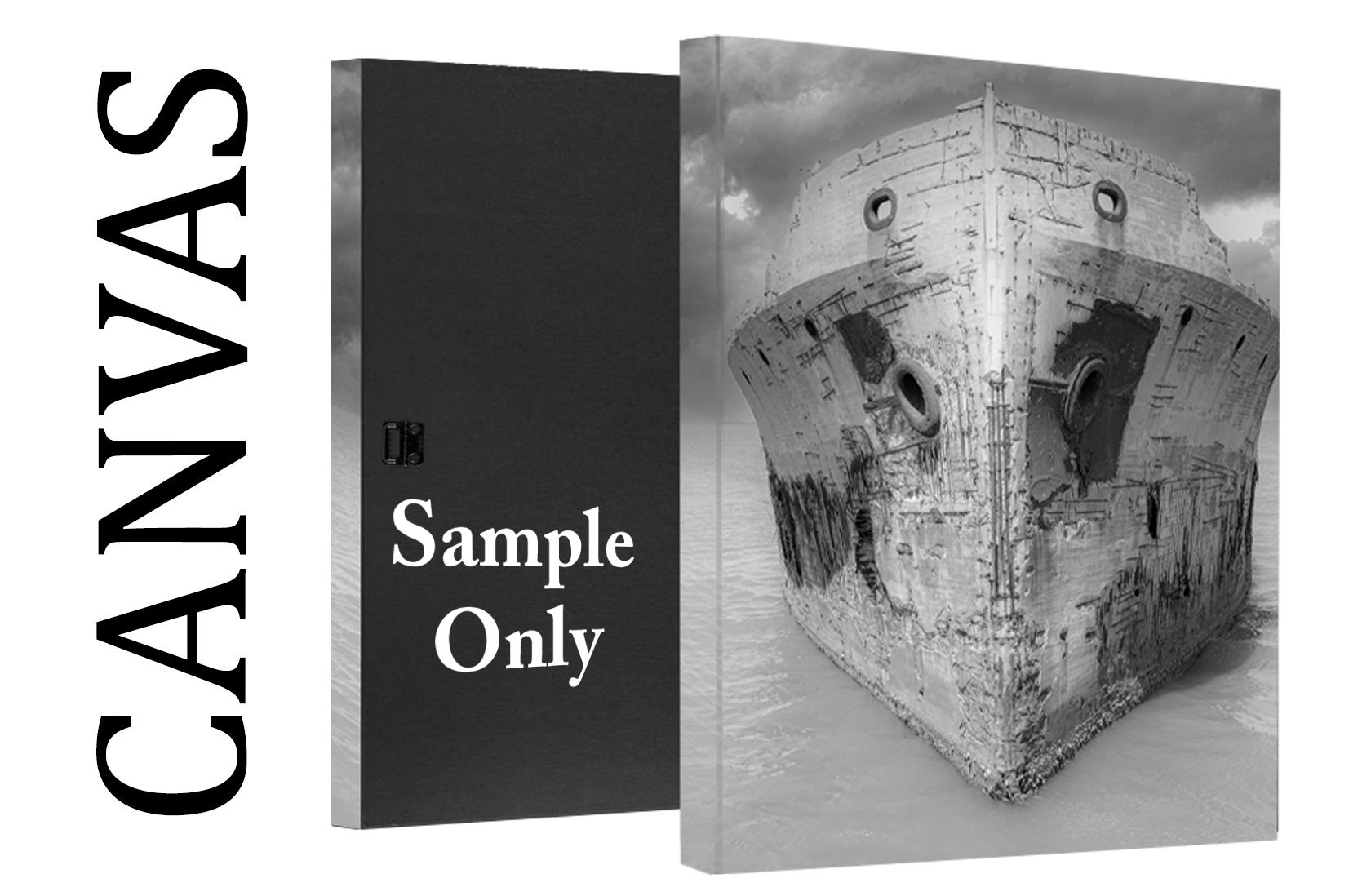Powell Arch (Mardi Gras Arch) During Mardi Gras 2023 Galveston Texas Framed Print - Free Shipping
from $29.00
“The festive arches gracing Galveston’s historic Strand District are part of an imaginative civic design project undertaken in 1985 and based on temporary decorative arches constructed in 1881, when the City of Galveston hosted Saengerfest, a biennial singing contest sponsored by German immigrant choral societies around the state of Texas.”
“In 1985, Galveston-born oilman and developer George Mitchell and his wife Cynthia commissioned seven noted architects – Eugene Aubry, Michael Graves, Helmut Jahn, Charles Moore, Cesar Peili, Boone Powell and Stanley Tigerman – each to design a “fantasy arch” for Galveston. The “fantasy arches” were conceived to be a dramatic part of the city’s 1986 Mardi Gras celebration, as well as a salute to the Texas Sesquicentennial.”
“The Powell arch at 24th and Mechanic is a breezy, colorful structure of mast, rigging and pennants, suggestive of the sailing ships that called on Galveston during its glory days as a major seaport. The structure is crowned by a double arch and an exaggerated oculus — both direct references to master Galveston architect Nicholas Clayton.”
“At night, “Tivoli” lights in the traditional Mardi Gras colors of purple, yellow and green trace the outline of the design, adding a carnivalesque air.”
“Boone Powell, a partner in the San Antonio firm of Ford, Powell & Carson and a noted authority on preservation and rejuvenation of buildings and cities, designed the restoration of Galveston’s historic 1879 Tremont House hotel and 1871 T. Jeff League Building, which houses The Wentletrap restaurant. His other major projects include the campus master plan and 19 major buildings for Skidmore College, Saratoga Springs., New York; Tower of the Americas, San Antonio; and Galveston’s Pier 21 development.”
“An exhibition of architectural renderings, photographs and models of the Galveston arch project was displayed at the Cooper-Hewitt Museum, the Smithsonian Institution’s National Museum of Design, from October 1987 through January 1988.”
Arch BIO Credit: Galveston.com
Mardi Gras! Galveston, the third largest Mardi Gras celebration in the United States, offers the unique chance to experience sand between your toes and gorgeous beach sunsets while taking in the revelry and lavish parades known to dominate Galveston Island during carnival season.
Mardi Gras celebrations are expected to draw more than 350,000 attendees for 30+ concerts, parades, balcony parties and several elegant balls.
For details, visit www.mardigrasgalveston.com.
About Mardi Gras! Galveston
Mardi Gras, the traditional festival of feasting and merrymaking that precedes the season of Lent, was first publicly observed on Galveston Island in 1867. Following a sabbatical imposed in 1941 by war and challenging times, Mardi Gras! Galveston was revived in 1985 by Galveston-born preservationist and developer George P. Mitchell. The largest celebration of its kind in Texas and the third largest in the nation, Mardi Gras! Galveston brings the island’s streets to life with parade viewers shouting for beads, lively tunes played by the colorful marching bands, and the infectious merriment that dominates the island for two full weeks.
Mardi Gras BIO Credit: GalvestonIslandGuide.com
Learn More About Canvas Wall Art Here
SKU 022023-327_Framed
Frame Size:
Quantity:
“The festive arches gracing Galveston’s historic Strand District are part of an imaginative civic design project undertaken in 1985 and based on temporary decorative arches constructed in 1881, when the City of Galveston hosted Saengerfest, a biennial singing contest sponsored by German immigrant choral societies around the state of Texas.”
“In 1985, Galveston-born oilman and developer George Mitchell and his wife Cynthia commissioned seven noted architects – Eugene Aubry, Michael Graves, Helmut Jahn, Charles Moore, Cesar Peili, Boone Powell and Stanley Tigerman – each to design a “fantasy arch” for Galveston. The “fantasy arches” were conceived to be a dramatic part of the city’s 1986 Mardi Gras celebration, as well as a salute to the Texas Sesquicentennial.”
“The Powell arch at 24th and Mechanic is a breezy, colorful structure of mast, rigging and pennants, suggestive of the sailing ships that called on Galveston during its glory days as a major seaport. The structure is crowned by a double arch and an exaggerated oculus — both direct references to master Galveston architect Nicholas Clayton.”
“At night, “Tivoli” lights in the traditional Mardi Gras colors of purple, yellow and green trace the outline of the design, adding a carnivalesque air.”
“Boone Powell, a partner in the San Antonio firm of Ford, Powell & Carson and a noted authority on preservation and rejuvenation of buildings and cities, designed the restoration of Galveston’s historic 1879 Tremont House hotel and 1871 T. Jeff League Building, which houses The Wentletrap restaurant. His other major projects include the campus master plan and 19 major buildings for Skidmore College, Saratoga Springs., New York; Tower of the Americas, San Antonio; and Galveston’s Pier 21 development.”
“An exhibition of architectural renderings, photographs and models of the Galveston arch project was displayed at the Cooper-Hewitt Museum, the Smithsonian Institution’s National Museum of Design, from October 1987 through January 1988.”
Arch BIO Credit: Galveston.com
Mardi Gras! Galveston, the third largest Mardi Gras celebration in the United States, offers the unique chance to experience sand between your toes and gorgeous beach sunsets while taking in the revelry and lavish parades known to dominate Galveston Island during carnival season.
Mardi Gras celebrations are expected to draw more than 350,000 attendees for 30+ concerts, parades, balcony parties and several elegant balls.
For details, visit www.mardigrasgalveston.com.
About Mardi Gras! Galveston
Mardi Gras, the traditional festival of feasting and merrymaking that precedes the season of Lent, was first publicly observed on Galveston Island in 1867. Following a sabbatical imposed in 1941 by war and challenging times, Mardi Gras! Galveston was revived in 1985 by Galveston-born preservationist and developer George P. Mitchell. The largest celebration of its kind in Texas and the third largest in the nation, Mardi Gras! Galveston brings the island’s streets to life with parade viewers shouting for beads, lively tunes played by the colorful marching bands, and the infectious merriment that dominates the island for two full weeks.
Mardi Gras BIO Credit: GalvestonIslandGuide.com
Learn More About Canvas Wall Art Here
SKU 022023-327_Framed
“The festive arches gracing Galveston’s historic Strand District are part of an imaginative civic design project undertaken in 1985 and based on temporary decorative arches constructed in 1881, when the City of Galveston hosted Saengerfest, a biennial singing contest sponsored by German immigrant choral societies around the state of Texas.”
“In 1985, Galveston-born oilman and developer George Mitchell and his wife Cynthia commissioned seven noted architects – Eugene Aubry, Michael Graves, Helmut Jahn, Charles Moore, Cesar Peili, Boone Powell and Stanley Tigerman – each to design a “fantasy arch” for Galveston. The “fantasy arches” were conceived to be a dramatic part of the city’s 1986 Mardi Gras celebration, as well as a salute to the Texas Sesquicentennial.”
“The Powell arch at 24th and Mechanic is a breezy, colorful structure of mast, rigging and pennants, suggestive of the sailing ships that called on Galveston during its glory days as a major seaport. The structure is crowned by a double arch and an exaggerated oculus — both direct references to master Galveston architect Nicholas Clayton.”
“At night, “Tivoli” lights in the traditional Mardi Gras colors of purple, yellow and green trace the outline of the design, adding a carnivalesque air.”
“Boone Powell, a partner in the San Antonio firm of Ford, Powell & Carson and a noted authority on preservation and rejuvenation of buildings and cities, designed the restoration of Galveston’s historic 1879 Tremont House hotel and 1871 T. Jeff League Building, which houses The Wentletrap restaurant. His other major projects include the campus master plan and 19 major buildings for Skidmore College, Saratoga Springs., New York; Tower of the Americas, San Antonio; and Galveston’s Pier 21 development.”
“An exhibition of architectural renderings, photographs and models of the Galveston arch project was displayed at the Cooper-Hewitt Museum, the Smithsonian Institution’s National Museum of Design, from October 1987 through January 1988.”
Arch BIO Credit: Galveston.com
Mardi Gras! Galveston, the third largest Mardi Gras celebration in the United States, offers the unique chance to experience sand between your toes and gorgeous beach sunsets while taking in the revelry and lavish parades known to dominate Galveston Island during carnival season.
Mardi Gras celebrations are expected to draw more than 350,000 attendees for 30+ concerts, parades, balcony parties and several elegant balls.
For details, visit www.mardigrasgalveston.com.
About Mardi Gras! Galveston
Mardi Gras, the traditional festival of feasting and merrymaking that precedes the season of Lent, was first publicly observed on Galveston Island in 1867. Following a sabbatical imposed in 1941 by war and challenging times, Mardi Gras! Galveston was revived in 1985 by Galveston-born preservationist and developer George P. Mitchell. The largest celebration of its kind in Texas and the third largest in the nation, Mardi Gras! Galveston brings the island’s streets to life with parade viewers shouting for beads, lively tunes played by the colorful marching bands, and the infectious merriment that dominates the island for two full weeks.
Mardi Gras BIO Credit: GalvestonIslandGuide.com
Learn More About Canvas Wall Art Here
SKU 022023-327_Framed




